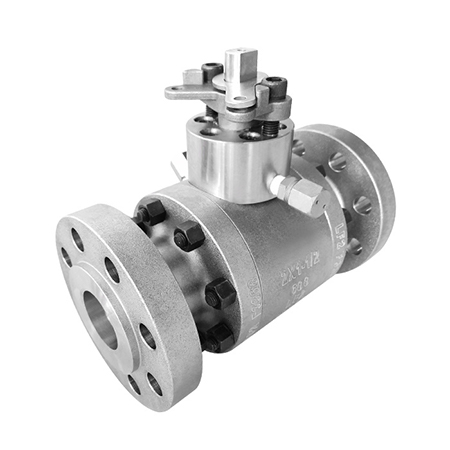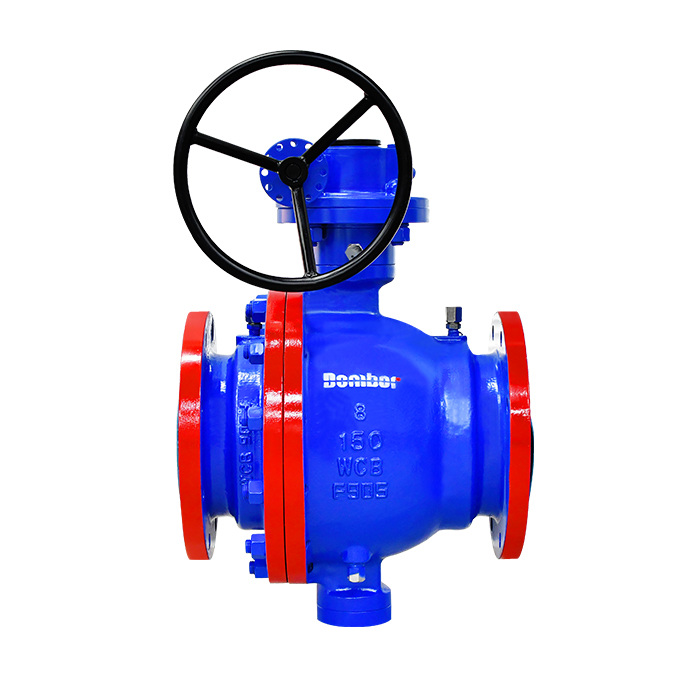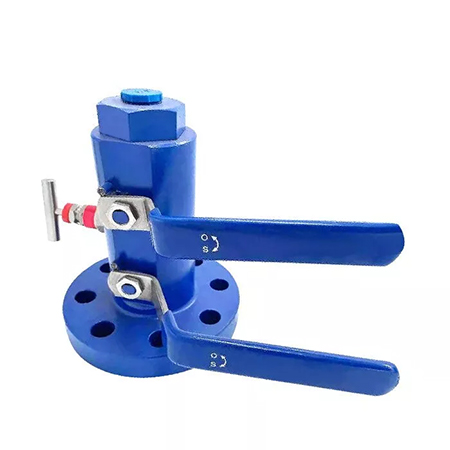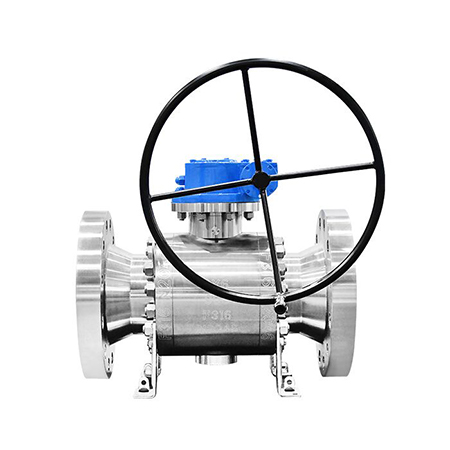Ball valves are one of the essential components designed by industrial valve manufacturers. Due to their durability, reliability, and versatility, they are used when transporting media through pipelines. However, if the media cannot expand because it’s trapped in an enclosed space, the pressure will increase. This often happens with isolated ball valves. And this can result in problems like leakage, damage to the valve, and even system failure.

To address this challenge, cavity relief holes are incorporated into ball valves to release trapped pressure and prevent potential issues.
In this article, we’ll explore what a cavity relief hole in a ball valve is and how it functions.
What is Cavity Relief Hole in Ball Valve
A ball valve cavity relief hole is a small drilled hole located in the ball valve body that allows any pressure trapped in the valve cavity to be released. This hole can be located in the upstream or downstream end of the valve and is typically designed to stop pressure buildup from causing damage or deformation to the valve components.

Cavity Relief in Trunnion Ball Valves
Trunnion ball valve with relief hole is used in high-pressure and high-temperature applications where reliable performance is critical. This valve has a fixed ball that is supported by a trunnion or shaft, which allows for precise control of the valve opening and closing.
Some industrial ball valve suppliers manufacture trunnion ball valves with single piston effect seats that automatically releases pressure into the pipeline. These valves are designed with “self-relieving seats” to release pressure.
When the valve is closed, the trunnion cavity pressure relief ball valve traps the media in the body cavity. And when heated, the pressure in the body cavity increases and pushes the downstream ball valve seat away from the ball by rising pressure against the spring load. This results in the release of the pressure.
Cavity Relief in Floating Ball Valves
Similar to an industrial butterfly valve, floating ball valves are widely used in various industries due to their ease of operation and low cost, hence why they are frequently manufactured by valves companies. These valves have a ball that floats between the two seats, allowing for a tight seal and low torque operation. The media gets trapped in the cavity when closing the valve. And when closed, the ball can make a lateral movement between the two elastomeric seats.
Floating ball valve cavity relief is achieved through the use of relief holes drilled in the downstream side of the valve. These relief holes allow any pressure trapped in the valve cavity to be released, preventing damage to the valve and surrounding equipment due to pressure buildup. Additionally, these relief holes can be used to verify that the valve is closed by checking for the presence of fluid in the cavity.
What is the Purpose of Vented Ball Valves
The primary purpose of vented ball valves is to provide a reliable and safe mechanism for venting gas or liquid from pipelines or tanks. In some cases, gases or liquids can build up pressure due to changes in temperature or pressure. This can lead to dangerous situations, such as explosions or other safety hazards. Vented ball valves help prevent these risks by providing a safe and reliable means for releasing trapped gases or liquids.

Another purpose of vented ball valves is to regulate the flow of gases or liquids through the pipeline. The vented ball valve is designed to provide precise control over the flow rate of the fluid in the pipeline. It can be operated manually or automated using an actuator to control the flow rate. This allows the valve to be used in a wide range of applications where precise flow control is essential.
Furthermore, vented ball valves are designed for easy maintenance and cleaning. These valves have a simple design that allows for easy disassembly and cleaning. This makes them ideal for use in applications where hygiene and sanitation are critical, such as food processing and pharmaceuticals.
Cavity Relief Testing for Valves
Cavity relief testing is essential to detect liquids or other media with thermal capacity trapped in the body cavity. It’s recommended where the media is subjected to heating or big differences in temperature and pressure over time.
Below are the cavity relief testing specified by API 6D.
Trunnion Ball Valves
- Put water in the valve’s half-open position. At each end of the valve, open the valve and let water overflow from the test connections.
- When one seat in the valve relieves the cavity pressure into the valve end, apply pressure to the valve cavity and note the pressure relief.
- When using a type of valve that has a second seat relief, keep increasing the cavity pressure until the second seat is relieved. Note the second seat’s relief pressure.
- To get a great result, relieve at a pressure more than 1.33 times the valve pressure rating.
Floating Ball Valves
- With the valve half-open, pressurize the valve to 1.33 times the valve pressure rating.
- Close the valve and let each end return to atmospheric pressure.
- Partially open the valve to check if the test media trapped in the cavity has been released. In the event of trapped pressurizing media in the cavity, the testing fails.
The Functions of Ball Valve Cavity Relief
The cavity relief feature in a ball valve serves important functions in maintaining the valve’s performance and safety. Here are some functions of them:
- Overpressure protection: Ball valve cavity relief is designed to protect the valve body and other components from damage caused by overpressure in the valve cavity. The relief mechanism activates at a predetermined pressure level to release excess pressure and prevent unsafe conditions such as explosions or leaks.
- Maintains sealing capability: Cavity relief hole in ball valve helps maintain the valve’s sealing capability by preventing damage to the seals or seats due to overpressure. This ensures that the valve can operate effectively and prevent fluid leaks.
- Facilitates easy maintenance: Cavity pressure relief ball valve allows for safe and easy maintenance of the valve by providing a means for pressure relief during disassembly or repair. This reduces the risk of accidents during maintenance and increases the valve’s reliability.
- Consistent fluid flow: The cavity relief mechanism maintains a consistent pressure in the valve cavity, which facilitates precise control of fluid flow. This enhances the valve’s performance and efficiency.
- Enhances safety: Ball valve with relief hole increases the valve’s safety by ensuring that the relief mechanism is functioning properly. This reduces the risk of accidents and enhances the valve’s overall reliability.
Conclusion
Ball valve cavity relief plays a crucial role in preventing damage to ball valves and ensuring the safe and reliable operation of various industrial applications. In trunnion ball valves and floating ball valves, these relief holes are designed to release trapped pressure and prevent potential issues like leakage, damage to the valve, and even system failure. Additionally, understanding ball valve handle types is crucial for ensuring effective cavity relief and reliable operation.

As one of the leading China valves manufacturers, Dombor makes a wide range of quality ball valves with relief holes. With our large manufacturing factory equipped with cutting-edge machinery and technology, our highly-skilled staff make trunnion ball and floating ball valves that help release trapped pressure. Our valves are manufactured to ensure high functionality of mechanical systems throughout their service life.









